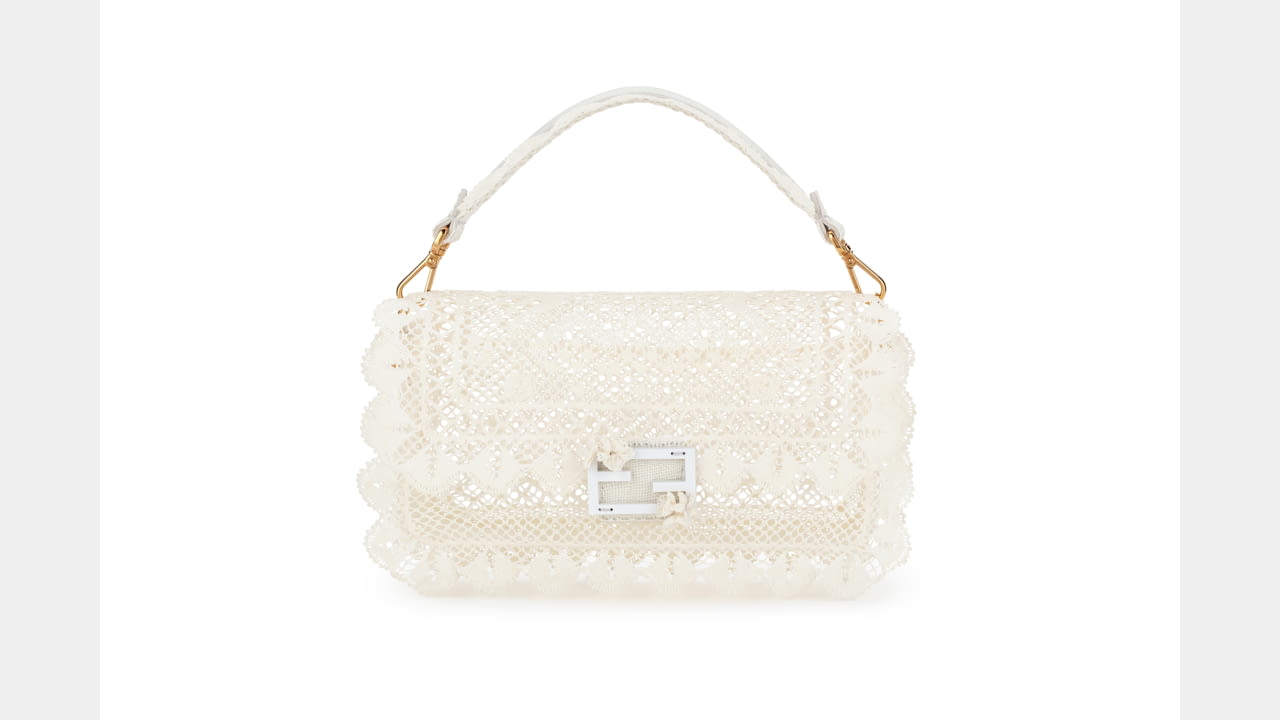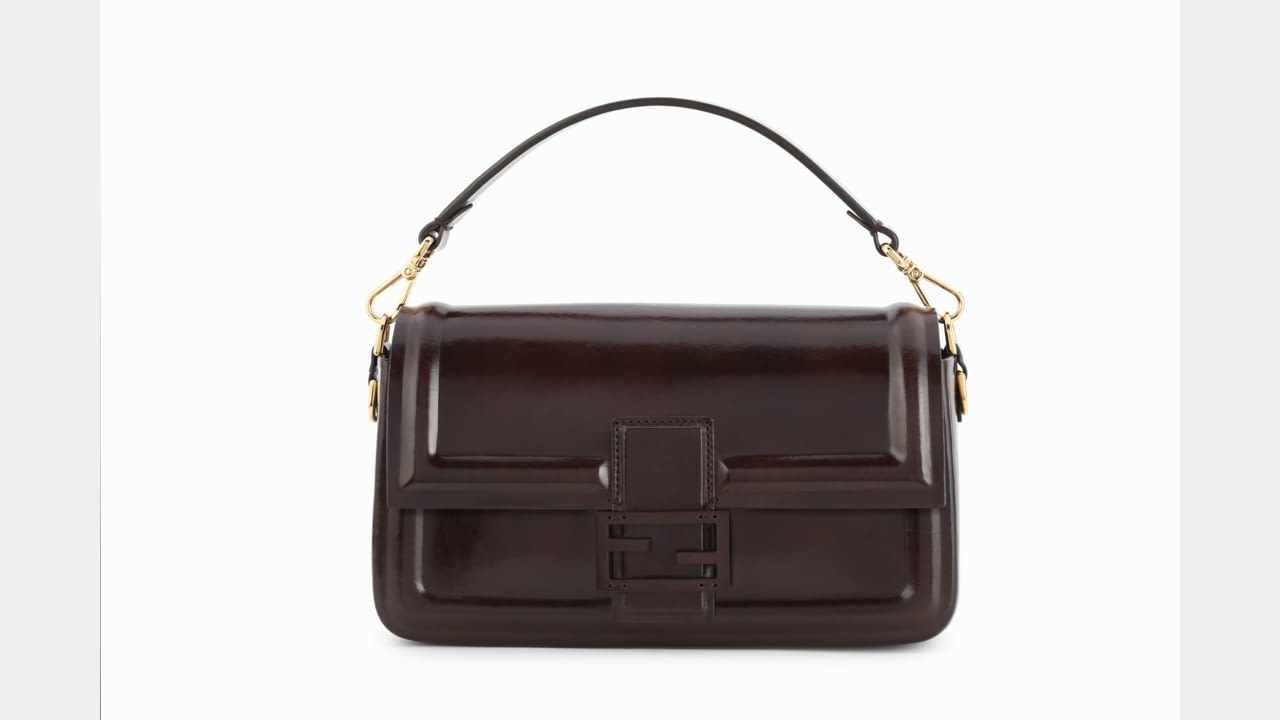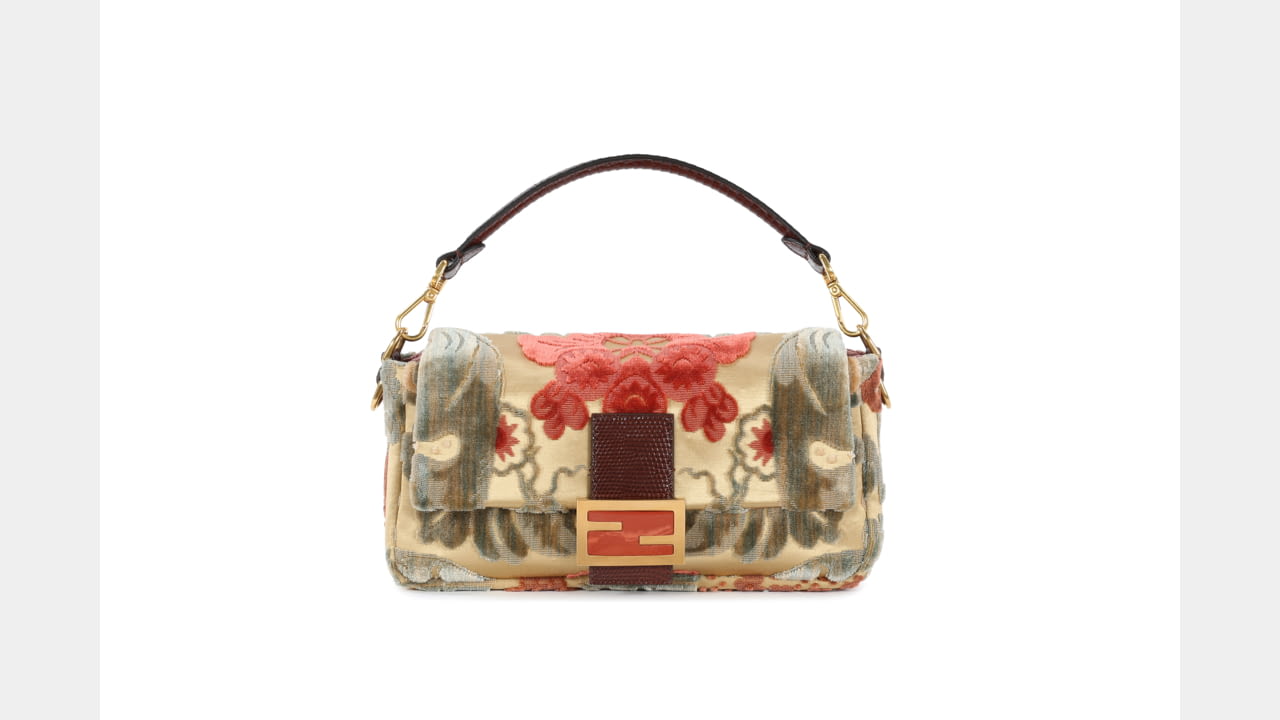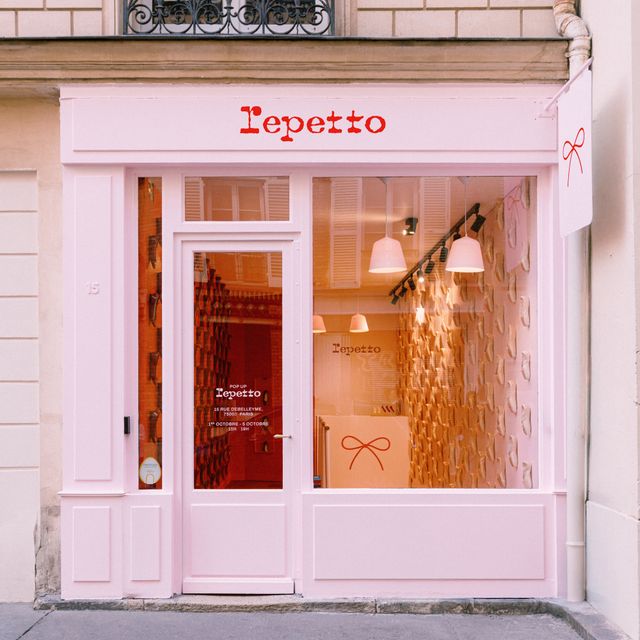Casa - 10/21/20
Honouring its perennial appreciation for Italian handcrafts, FENDI announces ‘hand in hand’, a grassroots partnership with local artisans across Italy. Beginning with the Baguette handbag – designed by creative director Silvia Venturini Fendi in 1997 – this unprecedented project showcases the time-honoured skills of craftspeople across Italy whose specialities in the applied arts continue FENDI’s long history of reinterpreting this iconic shape. The ‘hand in hand’ project calls upon a diverse group of ateliers and workshops to interpret the Baguette by applying local craft, transforming its traditional handbag construction into a veritable objet d’art. Unifying each limited-edition Baguette in an edition of 20, the inside pocket of every bag is stamped with the atelier’s name and location, and the gold ‘FENDI Hand in Hand’ logo.
“I am developing a special project with Italian artisans, each one selected from a different Italian region. The first example is the leather Baguette bag that was presented on the Fall/Winter 2020-2021 catwalk. It is made in Tuscany by a man who normally makes small leather goods all by hand in small quantities. He makes everything by himself. It’s made of vegetal leather, very natural, and there is no stitching, it’s just bonded. My aim now is to explore every Italian region and select the best artisans still working today - and then expand the project worldwide.” - Silvia Venturini Fendi
The name ‘hand in hand’ represents the encounter of the local artisans’ hands with the FENDI artisans’ hands, giving life to a unique collaboration. Ancient hand-made abilities and techniques of enormous value come together in the creation of these one-of-a-kind pieces. Above and beyond the creation of artisanal FENDI products, this project establishes a strong network of human relationships and is a crucial step in preserving and transmitting the rare craft, creativity and savoir-faire of these local artisans across Italy.
Unveiled with Look N°13 on the FENDI Women’s Fall/Winter 2020-21 catwalk, this ‘hand in hand’ partnership takes us to Tuscany, where the Florentine atelier Peroni have been crafting small leather goods made of a typical vegetable- tanned leather through an historical Florentine artistic technique named ‘cuoio artistico fiorentino’ since 1956. The third-generation family business specialises in shaping rigid structures like the timeless ‘tacco’ coin case, allowing them to approach the Baguette by cutting a single piece of leather and moulding it – without lining or stitches – into a glossy, bevelled frame Baguette. Crafted in dark chocolate brown, the Baguette’s signature FF buckle is sheathed in leather too, creating a seamless, monochrome effect that highlights the precise nature of Peroni’s handmade leather creations. It is a long handmade procedure that involves the wetting of the leather that is then placed on a wooden form to give it the desired shape, Peroni artisan could be almost called a sculptor of leather.
Travelling west to the island of Sardinia, the ‘hand in hand’ partnership shifts the focus away from leather to textile craft. In the hilltop village of Ulassai, the Su Marmuri women’s cooperative has been dedicated to weaving tapestries by hand since 1971 in order to preserve the traditions of the territory. On manual looms, artisans weave threads of natural fibres to create a raised relief of intricate dots, in a weaving technique affectionately named pibiones, which meaning ‘grapes’ in the local Sardinian dialect. For FENDI, the Su Marmuri weavers have created a black and white diagonal stripe motif for the body of the Baguette together with a FF logo pattern weaved on the inside. This soft Baguette is left unlined to celebrate the double-sided beauty of the pibiones weaving and is embellished by a long mutton fur round the sides.
In the heart of Venice, Veneto, the ‘hand in hand’ partnership delves into the archives of the jacquard artisans Luigi Bevilacqua, with five centuries of family experience crafting opulent Venetian textiles. Handwoven on 18 th century looms, Bevilacqua’s soprarizzo ‘over the curl’ silk and cotton velvet represent the most artisanal timewise intensive ‘hand in hand’ project, as each millimetre of the rich floral brocade motif inspired by the ancient venetian repertory, is cut and woven by artisans who produce few centimetres of fabric per day. Lined in powder pink silk, this Baguette evokes the spirit of Venice and the colourful history of its palazzos in all their faded beauty. The bag is further enriched by the FF buckle sculpted in jasper with lizard details and handle, together with a knotted interlaced satin strap.
Going south to Puglia, the ‘hand in hand’ partnership honours a long collaboration with the Dodino lace artisans based in the village of Nardò. Their delicately looped and knotted lace designs are tatted on wooden shuttles to create concentric, flowery designs in a traditional Apulian technique known as chiacchierino – referring to the chatty atmosphere of the artisans as they work. Applied over a padded cotton and linen base, the chiacchierino lacework seems to float in 3D floral clouds over the surface of the Baguette, which features a special FF buckle adorned with seed pearls.
Inherent to the Marche region of central Italy, the technique of weaving wicker, leather and cord is dated back to the Renaissance period and has been passed down through generations at Bottega Intreccio. This ‘hand in hand project celebrates the local custom of weaving specifically with willow branches, that has been picked up from this artisan for FENDI. The willow tree is autochthonous of the Marche region and therefore there is a limited amount available that is collected during spring. During the workmanship of this Baguette the willow is soaked for a few days in order to make it more flexible before it is interlaced by hand by the artisan around a metal frame. The result is a Baguette accented by the natural textures and tones of this supple wood with a woven willow motif inspired by the baskets of the local fishermen and finished with vegetal leather details.
Across to Umbria, and the opulent handwoven fabrics of the city of Perugia are the focus of the next ‘hand in hand’ collaboration, honouring the highly decorative and historical patterns recreated by Giuditta Brozzetti since 1921. This initiative is one of the first examples of female entrepreneurship, with its own laboratory it offers work opportunities to local women who would have once practiced weaving and made wedding linens at hoLocated inside a Franciscan convent, the fourth-generation family business continues to produce authentic hand-woven textiles inspired by Medieval designs on antique looms from the 19 th century. For their FENDI Baguette, Giuditta Brozzetti today ran by her grand-niece Marta, have reproduced an historical textile with a two-tone scrolled motif featuring a horse, a peacock, a unicorn and a dove from classical mythology in a bright royal blue against a neutral background. This blue gives the bag an innate opulence, as it was identified in the past as a very aristocratic colour once made with rare indigo pigments from South East Asia. The bag is finished with handmade macramé lace inspired by the ancient trimmings on medieval textiles.
Known as the town of lace, Isernia is in the region of Molise (near the heel of Italy’s ‘boot’) on the country’s east coast. Worked with fine ivory-coloured yarns, the bobbin lace of Isernia is acclaimed throughout the world for its flat geometric patterns and ultralight spirals made with fine wooden bobbins and a traced pattern held over a cylindrical cushioned support. It is said that Benedictine nuns brought the tradition from Spain in the early 16 th century, passing down the technique to the sisters of the Santa Maria delle Monache church. This FENDI ‘hand in hand’ project is realised in partnership with the GC Corredi lace parlour through the hands of the expert lace artisans, with Isernia lacework panels overlaid on a Baguette crafted in nappa leather in a light neutral color.
Throughout the coastal province of Cosenza in Calabria, the art of weaving ‘ginestra’ broom fibres has been passed down through generations since antiquity – a manual practice that requires no electricity, elaborate machines or chemicals and produces zero pollution. The hardy shrub is harvested through summer and treated by hand to create the raw, cool fibres that have been woven into the natural panels that form this plant based FENDI Baguette in collaboration with the Fabbrica Tessile Bossio. The bag features designs inspired by local traditional motifs and the iconic FF logo pattern is dyed with natural plant-based tinctures. Long fringes made of broom threads entirely knotted by hand decorate each side of the bag.
In FENDI’s hometown Rome in the region of Lazio, the city’s rich history of marble marquetry and silver and goldsmithing are united in the work of master jeweller Massimo Maria Melis. Since 1982 in his renowned atelier and boutique in the Via Dell’Orso, in the heart of the centre of Rome. Melis has garnered an international following for his intricate Etruscan and Roman style jewellery that incorporates ancient coins, polychrome glass and marble. For this FENDI ‘hand in hand’ project, a precious Baguette sees a fusion of FENDI’s leather craft with Melis’ gold-plated silver appliqué ‘bezel’ flourishes created with the lost wax technique and inlaid with hand-carved very rare marbles coming in very limited amounts as extracted from quarries that are now closed. The bezels are made from a special ancient Roman technique called ‘granulatura’ that creates a motif around the bezel like a groove. Two precious original bronze coins portraying Roman Emperors from the Imperial Period appear on the front of this Baguette.
Across to the Abruzzo region, the next ‘hand in hand’ collaboration sees FENDI call upon Simona Iannini, an artisan from the city of l’Aquila, to create a Baguette made entirely of ‘tombolo aquilano’ lace. This very ancient, meticulous technique exists since the 1400s, when various architects used to design projects reproduced in detail by the local ladies. It became a popular art form often practiced by the Benedictine nuns. ‘Tombolo aquilano’ workmanship sits apart from other lacework due to the fact that the continuous threads are interlaced and never cut, sewn or knotted as the artisan creates the desired pattern– for a Baguette like a precious jewel. This Baguette has olive wood details inspired by the fine wooden bobbins used for this unique workmanship, which uses interlaced linen threads forming a delicate net design with small FF logo inserts, and a lace strap. It requires more than 100 hours of work just to create the body of the bag. Once the bag is completed, the unlined lace is then starched using an ancient technique for rigidity and left to dry on a wooden form for three days.
In Trapani, on the island of Sicily, the master goldsmith Platimiro Fiorenza is considered one of UNESCO’s Living Human Treasures – a jeweller and goldsmith specialized in the art of setting red coral that preserves a local art form that has existed since the 12 th century. Handmade in his atelier, the FENDI Baguette features a unique façade of red coral elements making this one of the most precious ‘hand in hand’ project. The bag is made of silver rigid laminated panels, that are carved to create a geometric pattern where the corals are then placed using the ‘retroincasso’ (back recessed processing) technique, like a precious casket.
The ‘hand in hand’ initiative is a significant step in honouring FENDI’s commitment to Italian craftspeople across the country – artisans who are keeping traditional production methods alive today. These local workshops and ateliers are at the very heart of the Made in Italy movement, and FENDI believes in promoting their talents and passion in preserving ancient handmade workmanships on an international scale today more than ever. Together, we can celebrate the unique possibilities of Italian creativity and preserve age-old craft for the future.
#FendiHandinHand
“I am developing a special project with Italian artisans, each one selected from a different Italian region. The first example is the leather Baguette bag that was presented on the Fall/Winter 2020-2021 catwalk. It is made in Tuscany by a man who normally makes small leather goods all by hand in small quantities. He makes everything by himself. It’s made of vegetal leather, very natural, and there is no stitching, it’s just bonded. My aim now is to explore every Italian region and select the best artisans still working today - and then expand the project worldwide.” - Silvia Venturini Fendi
The name ‘hand in hand’ represents the encounter of the local artisans’ hands with the FENDI artisans’ hands, giving life to a unique collaboration. Ancient hand-made abilities and techniques of enormous value come together in the creation of these one-of-a-kind pieces. Above and beyond the creation of artisanal FENDI products, this project establishes a strong network of human relationships and is a crucial step in preserving and transmitting the rare craft, creativity and savoir-faire of these local artisans across Italy.
Unveiled with Look N°13 on the FENDI Women’s Fall/Winter 2020-21 catwalk, this ‘hand in hand’ partnership takes us to Tuscany, where the Florentine atelier Peroni have been crafting small leather goods made of a typical vegetable- tanned leather through an historical Florentine artistic technique named ‘cuoio artistico fiorentino’ since 1956. The third-generation family business specialises in shaping rigid structures like the timeless ‘tacco’ coin case, allowing them to approach the Baguette by cutting a single piece of leather and moulding it – without lining or stitches – into a glossy, bevelled frame Baguette. Crafted in dark chocolate brown, the Baguette’s signature FF buckle is sheathed in leather too, creating a seamless, monochrome effect that highlights the precise nature of Peroni’s handmade leather creations. It is a long handmade procedure that involves the wetting of the leather that is then placed on a wooden form to give it the desired shape, Peroni artisan could be almost called a sculptor of leather.
Travelling west to the island of Sardinia, the ‘hand in hand’ partnership shifts the focus away from leather to textile craft. In the hilltop village of Ulassai, the Su Marmuri women’s cooperative has been dedicated to weaving tapestries by hand since 1971 in order to preserve the traditions of the territory. On manual looms, artisans weave threads of natural fibres to create a raised relief of intricate dots, in a weaving technique affectionately named pibiones, which meaning ‘grapes’ in the local Sardinian dialect. For FENDI, the Su Marmuri weavers have created a black and white diagonal stripe motif for the body of the Baguette together with a FF logo pattern weaved on the inside. This soft Baguette is left unlined to celebrate the double-sided beauty of the pibiones weaving and is embellished by a long mutton fur round the sides.
In the heart of Venice, Veneto, the ‘hand in hand’ partnership delves into the archives of the jacquard artisans Luigi Bevilacqua, with five centuries of family experience crafting opulent Venetian textiles. Handwoven on 18 th century looms, Bevilacqua’s soprarizzo ‘over the curl’ silk and cotton velvet represent the most artisanal timewise intensive ‘hand in hand’ project, as each millimetre of the rich floral brocade motif inspired by the ancient venetian repertory, is cut and woven by artisans who produce few centimetres of fabric per day. Lined in powder pink silk, this Baguette evokes the spirit of Venice and the colourful history of its palazzos in all their faded beauty. The bag is further enriched by the FF buckle sculpted in jasper with lizard details and handle, together with a knotted interlaced satin strap.
Going south to Puglia, the ‘hand in hand’ partnership honours a long collaboration with the Dodino lace artisans based in the village of Nardò. Their delicately looped and knotted lace designs are tatted on wooden shuttles to create concentric, flowery designs in a traditional Apulian technique known as chiacchierino – referring to the chatty atmosphere of the artisans as they work. Applied over a padded cotton and linen base, the chiacchierino lacework seems to float in 3D floral clouds over the surface of the Baguette, which features a special FF buckle adorned with seed pearls.
Inherent to the Marche region of central Italy, the technique of weaving wicker, leather and cord is dated back to the Renaissance period and has been passed down through generations at Bottega Intreccio. This ‘hand in hand project celebrates the local custom of weaving specifically with willow branches, that has been picked up from this artisan for FENDI. The willow tree is autochthonous of the Marche region and therefore there is a limited amount available that is collected during spring. During the workmanship of this Baguette the willow is soaked for a few days in order to make it more flexible before it is interlaced by hand by the artisan around a metal frame. The result is a Baguette accented by the natural textures and tones of this supple wood with a woven willow motif inspired by the baskets of the local fishermen and finished with vegetal leather details.
Across to Umbria, and the opulent handwoven fabrics of the city of Perugia are the focus of the next ‘hand in hand’ collaboration, honouring the highly decorative and historical patterns recreated by Giuditta Brozzetti since 1921. This initiative is one of the first examples of female entrepreneurship, with its own laboratory it offers work opportunities to local women who would have once practiced weaving and made wedding linens at hoLocated inside a Franciscan convent, the fourth-generation family business continues to produce authentic hand-woven textiles inspired by Medieval designs on antique looms from the 19 th century. For their FENDI Baguette, Giuditta Brozzetti today ran by her grand-niece Marta, have reproduced an historical textile with a two-tone scrolled motif featuring a horse, a peacock, a unicorn and a dove from classical mythology in a bright royal blue against a neutral background. This blue gives the bag an innate opulence, as it was identified in the past as a very aristocratic colour once made with rare indigo pigments from South East Asia. The bag is finished with handmade macramé lace inspired by the ancient trimmings on medieval textiles.
Known as the town of lace, Isernia is in the region of Molise (near the heel of Italy’s ‘boot’) on the country’s east coast. Worked with fine ivory-coloured yarns, the bobbin lace of Isernia is acclaimed throughout the world for its flat geometric patterns and ultralight spirals made with fine wooden bobbins and a traced pattern held over a cylindrical cushioned support. It is said that Benedictine nuns brought the tradition from Spain in the early 16 th century, passing down the technique to the sisters of the Santa Maria delle Monache church. This FENDI ‘hand in hand’ project is realised in partnership with the GC Corredi lace parlour through the hands of the expert lace artisans, with Isernia lacework panels overlaid on a Baguette crafted in nappa leather in a light neutral color.
Throughout the coastal province of Cosenza in Calabria, the art of weaving ‘ginestra’ broom fibres has been passed down through generations since antiquity – a manual practice that requires no electricity, elaborate machines or chemicals and produces zero pollution. The hardy shrub is harvested through summer and treated by hand to create the raw, cool fibres that have been woven into the natural panels that form this plant based FENDI Baguette in collaboration with the Fabbrica Tessile Bossio. The bag features designs inspired by local traditional motifs and the iconic FF logo pattern is dyed with natural plant-based tinctures. Long fringes made of broom threads entirely knotted by hand decorate each side of the bag.
In FENDI’s hometown Rome in the region of Lazio, the city’s rich history of marble marquetry and silver and goldsmithing are united in the work of master jeweller Massimo Maria Melis. Since 1982 in his renowned atelier and boutique in the Via Dell’Orso, in the heart of the centre of Rome. Melis has garnered an international following for his intricate Etruscan and Roman style jewellery that incorporates ancient coins, polychrome glass and marble. For this FENDI ‘hand in hand’ project, a precious Baguette sees a fusion of FENDI’s leather craft with Melis’ gold-plated silver appliqué ‘bezel’ flourishes created with the lost wax technique and inlaid with hand-carved very rare marbles coming in very limited amounts as extracted from quarries that are now closed. The bezels are made from a special ancient Roman technique called ‘granulatura’ that creates a motif around the bezel like a groove. Two precious original bronze coins portraying Roman Emperors from the Imperial Period appear on the front of this Baguette.
Across to the Abruzzo region, the next ‘hand in hand’ collaboration sees FENDI call upon Simona Iannini, an artisan from the city of l’Aquila, to create a Baguette made entirely of ‘tombolo aquilano’ lace. This very ancient, meticulous technique exists since the 1400s, when various architects used to design projects reproduced in detail by the local ladies. It became a popular art form often practiced by the Benedictine nuns. ‘Tombolo aquilano’ workmanship sits apart from other lacework due to the fact that the continuous threads are interlaced and never cut, sewn or knotted as the artisan creates the desired pattern– for a Baguette like a precious jewel. This Baguette has olive wood details inspired by the fine wooden bobbins used for this unique workmanship, which uses interlaced linen threads forming a delicate net design with small FF logo inserts, and a lace strap. It requires more than 100 hours of work just to create the body of the bag. Once the bag is completed, the unlined lace is then starched using an ancient technique for rigidity and left to dry on a wooden form for three days.
In Trapani, on the island of Sicily, the master goldsmith Platimiro Fiorenza is considered one of UNESCO’s Living Human Treasures – a jeweller and goldsmith specialized in the art of setting red coral that preserves a local art form that has existed since the 12 th century. Handmade in his atelier, the FENDI Baguette features a unique façade of red coral elements making this one of the most precious ‘hand in hand’ project. The bag is made of silver rigid laminated panels, that are carved to create a geometric pattern where the corals are then placed using the ‘retroincasso’ (back recessed processing) technique, like a precious casket.
The ‘hand in hand’ initiative is a significant step in honouring FENDI’s commitment to Italian craftspeople across the country – artisans who are keeping traditional production methods alive today. These local workshops and ateliers are at the very heart of the Made in Italy movement, and FENDI believes in promoting their talents and passion in preserving ancient handmade workmanships on an international scale today more than ever. Together, we can celebrate the unique possibilities of Italian creativity and preserve age-old craft for the future.
#FendiHandinHand
Designer:
Fendi
CONDIVIDERE







